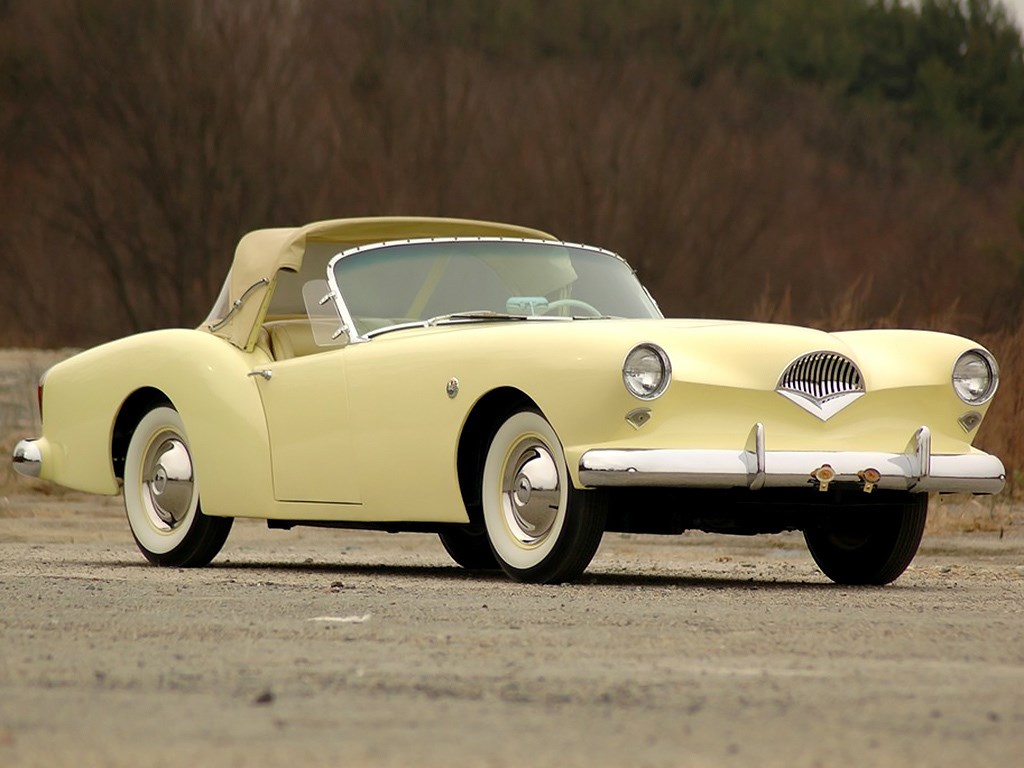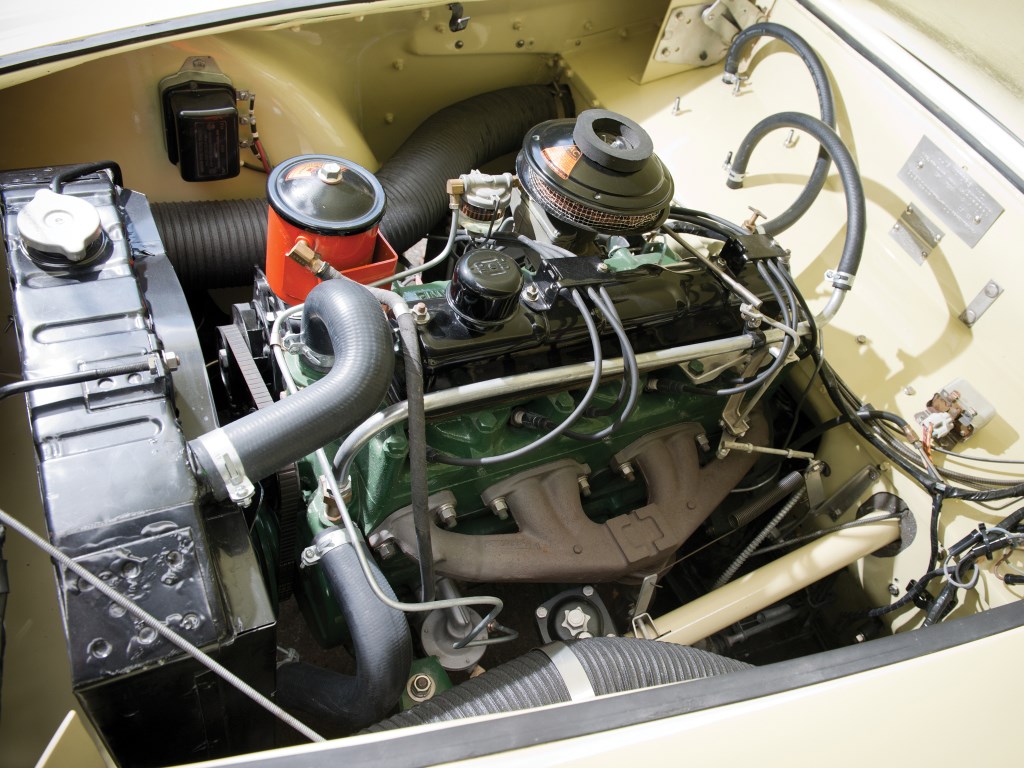
Highly original and innovative in many ways, the Kaiser Darrin could have enjoyed a successful career in the roadster market in the early 1950s. Unfortunately, fate decided otherwise.
As is often the case, the origins of the Kaiser-Darrin lie in ego. The ego of Henry Kaiser, an American industrialist who made his fortune during the 2nd World War, was particularly strong. After the war, he launched his own car brand, which was not as successful as he had hoped.
At the end of the 1940s, he met Howard (nicknamed 'Dutch') Darrin, a designer in his own right, who designed the Henry J., a mid-range saloon. However, he was soon thinking about designing a roadster that could put the brand on the map.
Kaiser was not enthusiastic about the project, but legend has it that his wife finally managed to convince him.

Glass fibre
The Kaiser Darrin was rather ambitious: it was the first American car with a fibreglass body, and the first prototype was produced in 1952, beating the Chevrolet Corvette to the punch. This innovative technology at the time had the advantage of being inexpensive, and it also avoided the shortages experienced by aluminium and steel.
The design of the Kaiser Darrin 161 is unique. With its tiny radiator grille, this car with its many curves is particularly fluid. What sets it apart is the virtual absence of chrome and the rail-mounted doors that slide into the front wings! This coquetry means that it has no windows in the doors, which means that it can only be used in countries where the climate is mild all year round.
Another special feature is the three-position 'pram' soft top, which gives the car a touch of elegance.

Average performance
In keeping with the standards of the time, the windscreen is rounded, in Cinemascope format. The particularly elegant interior is entirely covered in quilted vinyl, and the equipment is fairly complete for the early 50s, with a heater, full instrumentation and floor-mounted gearstick.
The engine was a 6-cylinder 2.6-litre Willys with a 3-speed gearbox. Developing 90 bhp, it enabled the Kaiser Darrin to reach a top speed of 155 km/h. Braking was via 4 drums. The car was finally presented to the public in 1954. More expensive than a certain Chevrolet Corvette that had recently arrived on the market, it was less powerful than its European rivals, the Triumph TR2 and the Mercedes 190 SL.
As a result, it sold very poorly and Henry Kaiser decided to withdraw it from the market in August 1954, just seven months after its commercial debut. Darrin bought back 50 unfinished cars that had been damaged in a storm. He then modernised them (compressor versions, different carburettors, etc.) to sell them on his own.
Six cars were even fitted with a 304 bhp Cadillac V8. Convinced by "his" car, the designer came up with a four-door version which he proposed to the Studebaker-Packard Corporation. The project never materialised.

Sustained prices
Of the 435 Kaiser Darrins built, only 280 are thought to still exist today. A symbol of the America of the early '50s, where every eccentricity was permitted, it is a rarity prized by discerning collectors.
Apart from the mechanics, which come from the mass production run, the rest of the components are unique and therefore impossible to find. The price for a fine example is around €120,000 to €160,000. (R2.4-million to R 3.2-million)



















